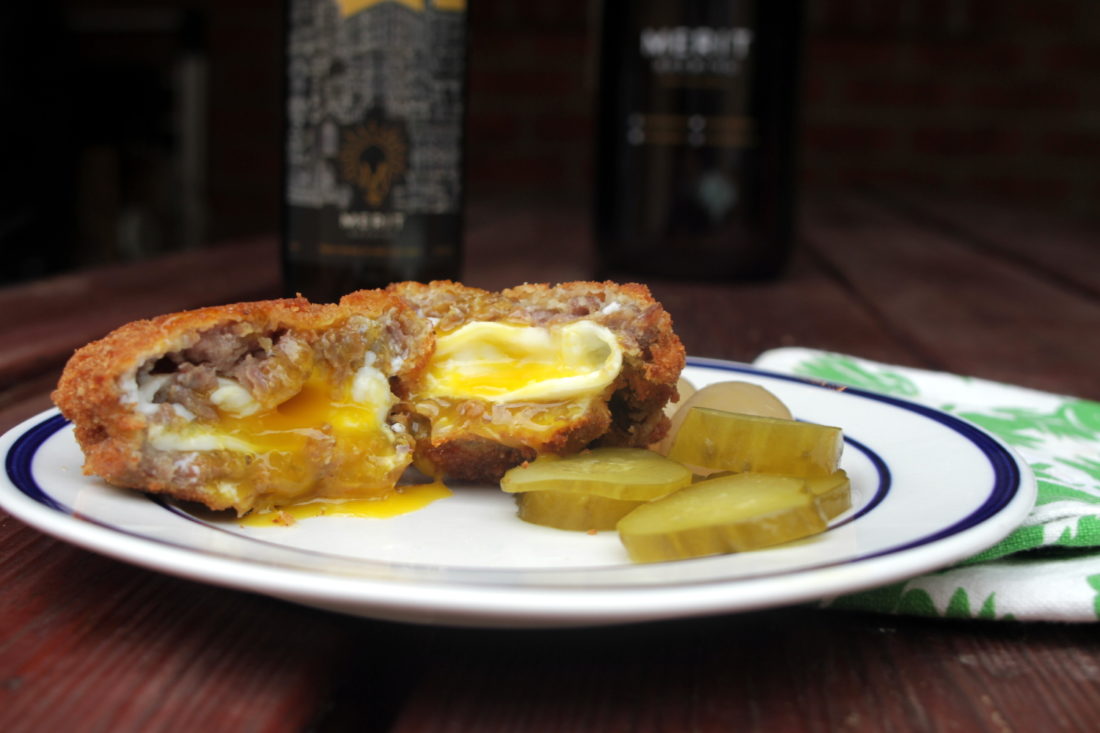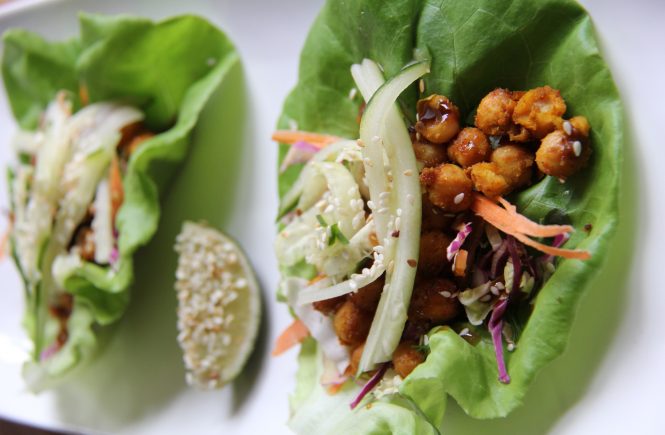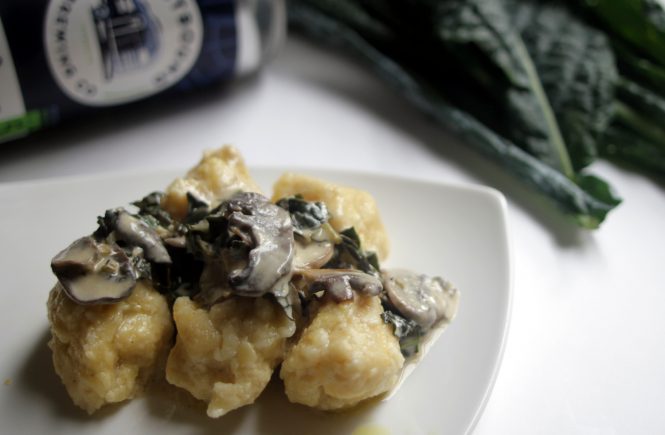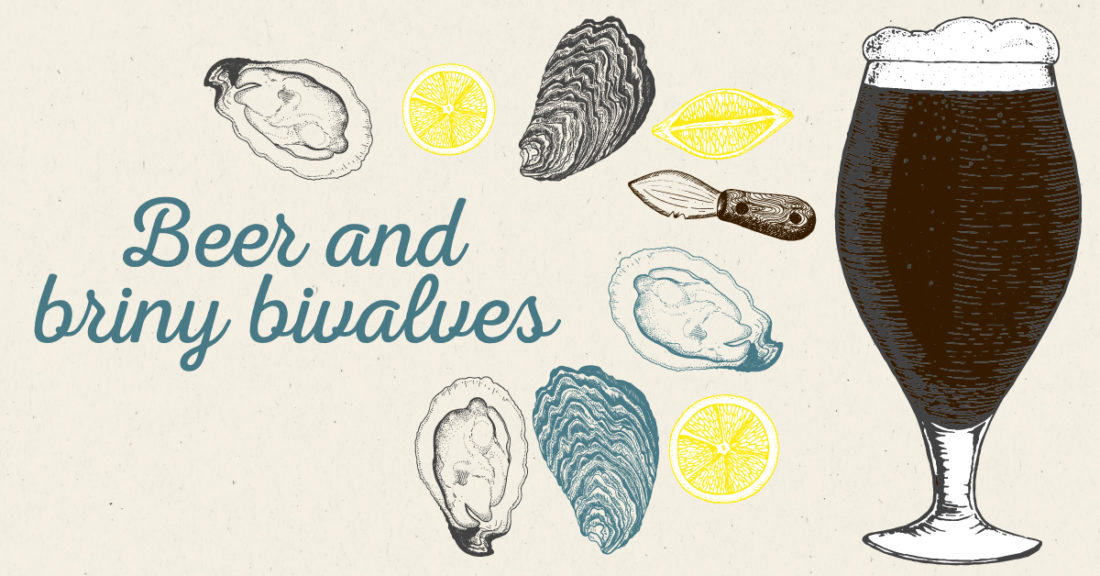
In her seminal 1941 book Consider the Oyster, M.F.K. Fisher contends that oysters, due to their sheer versatility, can be paired with pretty much any beverage. “One man can drink wine with them, another beer, and another fermented buttermilk, and no man will be wrong,” she writes.
When it comes to oysters and beer, Fisher’s approach—doing whatever makes you happy, essentially—is a valid one. But a pairing easily benefits from a bit of deeper thought. When done properly, a pairing is like a delicious feedback loop, with the drink improving the food and vice versa.
Ontario is home to a thriving craft beer scene and some of the country’s most important oyster purveyors. With prime oyster season approaching, it’s time to get some answers. Is there a worthwhile system for pairing oysters with beer, and if so, what is it?
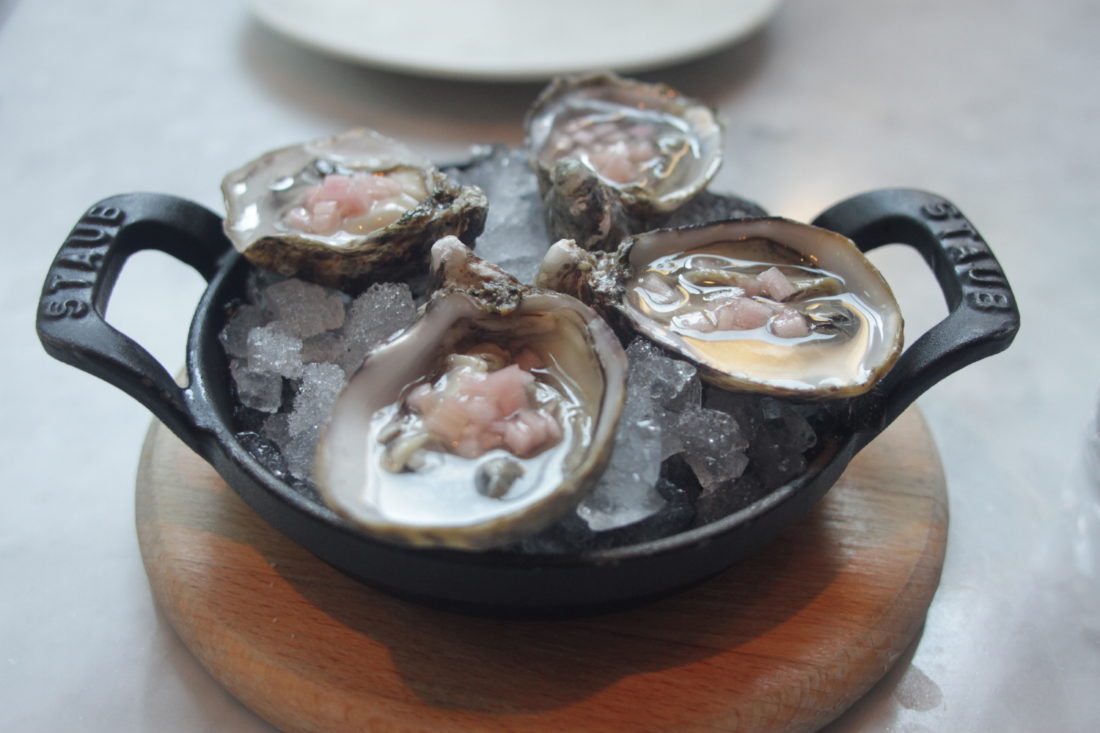
To address this question, it seems obvious to begin with stout. Long considered a quintessential beer pairing, oysters and stout go back to Victorian-era England. Walk into any pub in 1860s London and you’d likely find oysters as the primary snack, since the ocean was not yet a seething mass of cigarette butts and microplastic. And since Untapped badges did not yet exist, the beer selection would likely consist of various grades of porter, including stout and not much else.
Like an arranged marriage, oysters and stout were bound together by proximity and practicality. Still, the pairing happens to make a lot of sense. As beer historian Michael Jackson writes, “the earthy intensity of stout is a perfect foil for the gamey brineyness [sic] of oysters.” This is important because a beverage should taste different from the food with which it’s paired. Contrast is key, and a nice dry stout provides plenty of it.
But while Occam’s Razor does have its appeal, it’s kind of silly to think that one style of beer is always appropriate for oysters. For one thing, oysters are weird—even the cleanest and most refreshing oyster is a confounding mix of tastes and textures, of salt, sweet and seaweed. Then consider that there are five main species of oyster cultivated in North America, and hundreds of varieties, each with a distinct flavour profile.
East Coast oysters are salty and clean-tasting, while West Coast oysters are bolder, taking on notes of melon, umami or copper. The taste of an oyster, too, fluctuates with the season. As winter approaches, they become fat and sweet as they prepare for hibernation, and in spring, they’re thin and milky. Taking all of these variables into consideration, the oyster-beer conundrum can appear daunting.

“Oysters are as individual as every one of us,” says veteran Toronto chef Mark Cutrara. “An oyster takes a person five years to grow. We owe that person some semblance of respect to pair it with something great.”
Cutrara has served many oysters alongside many craft beers at both Bar Hop and Northern Maverick Brewing Company in Toronto. This is a subject he’s contemplated deeply, to which he’s found no simple answers. He prefers to start with the oyster, to determine its origin and flavour profiles, and work from there.
“With West Coast oysters, I like a citra-hopped IPA,” he says, indicating that the citrusy, lemon-peel flavours of the hops are a good complement to the hits of summer melon typically found in a West Coast oyster.
Then he runs into some difficulty.
“With East Coast, I like Sauvignon Blanc. But that’s not a beer is it?” He pauses for a moment, veering into overthinking territory. “I’m going to go with pilsner. You could also go with porter or stout, but you have to be comfortable with that.”
Cutrara’s approach seems loosely terroir-based. Citra hops originated in the Yakima Valley in Washington State, on the West Coast, so it makes sense that they would pair well with an oyster from the nearby Pacific. Porters, of course, were developed in England, near the Atlantic Ocean.
“I want every dish to taste like a place,” he says.
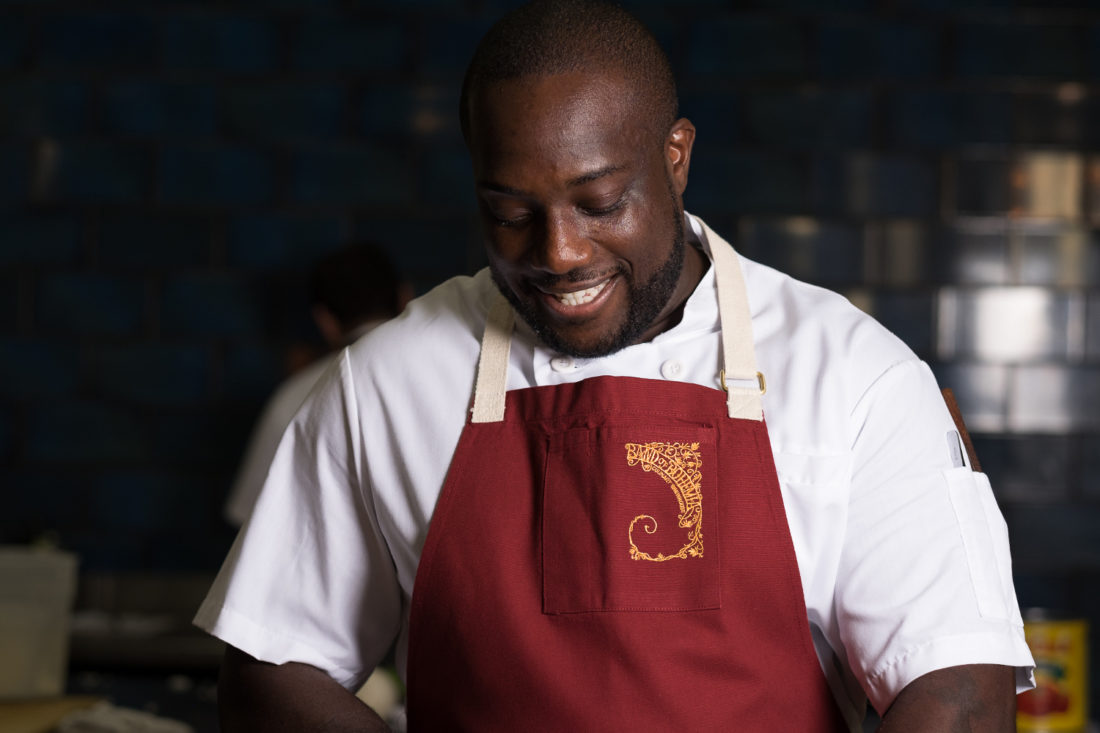
Ian Davis, executive chef at Chicago’s Band of Bohemia, the first-ever Michelin-starred brewpub, says that when in doubt, going the terroir route is probably a wise choice.
“The pairing should be something from the same region,” he says.
At Chicago’s Band of Bohemia, Davis took the oyster-beer challenge head-on by offering an appetizer of oysters done three ways: raw, grilled and fried. This might sound like a pairing nightmare, but his approach was to work backward.
He took Pacific shigoku oysters—meaty, full-bodied, redolent of cucumber—and found they paired well with Band of Bohemia’s Jasmine beer, a crisp but multilayered rice ale made with jasmine rice, jasmine tea and Vienna malt. Using that match-up as a starting point, he ensured that each addition to the appetizer would enhance the pairing.
He garnished the raw oysters with a rhubarb and black pepper mignonette, which showcased the beer’s crispness, and he topped the grilled oyster with white soy and black garlic, highlighting the beer’s nuttiness. The fried oysters were coated with polenta (flour and buttermilk didn’t match the beer) and then finished with an Old Bay aioli, for which the beer provided palate-cleansing refreshment.
“Every time you ate one of those oysters and tasted the beer, you’d experience something different,” he says. “Each garnish showcased something new in the beer.”
It’s crucial, he says, to keep things simple and not overthink the pairing—not always an easy task with so many paths to choose from.
Julius Chapple, front-of-house manager at Rodney’s Oyster House in Toronto, understands first-hand that with all the possibilities, one can easily slide into a beer-and-oyster rabbit hole.
“You could do a real deep dive into pairing oysters with beer,” he says. “The taste of an oyster all depends on where it lived and what time of year it is. You can get as nerdy as you want.”
While he acknowledges there’s a certain appeal to the classic stout pairing, Chapple sees potential in sour beers, which mimic the effect of common oyster garnishes such as mignonette or lemon. He also suggests a beer with high salinity, such as a gose, or a clean and crisp lager that won’t overpower a delicate oyster. Beau’s Lug Tread, he says, is a great seafood beer.
The important thing, he says, is to keep an open mind and to experiment.
“Enjoy what you’re drinking, he says. “It’s 2018. If you want to try something preposterous, do it. Part of the fun is experimentation and the research.”


